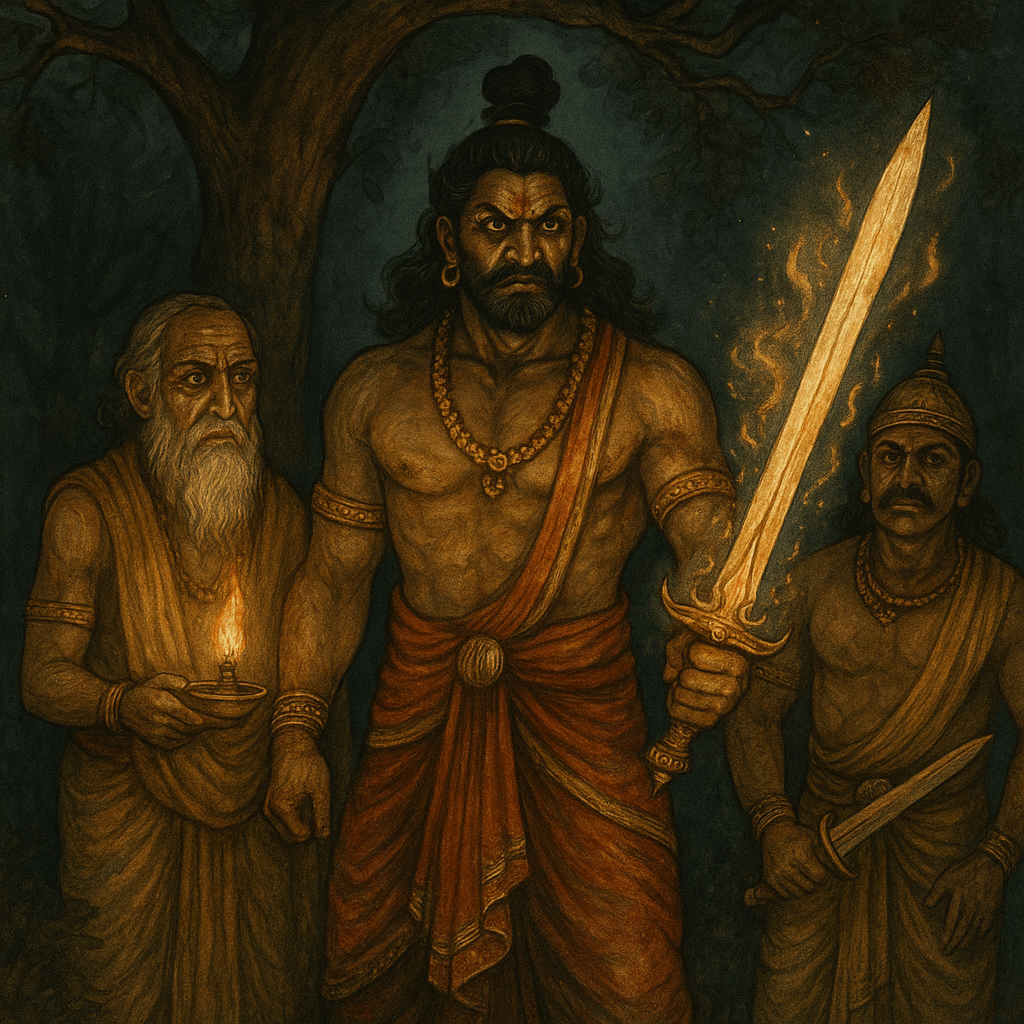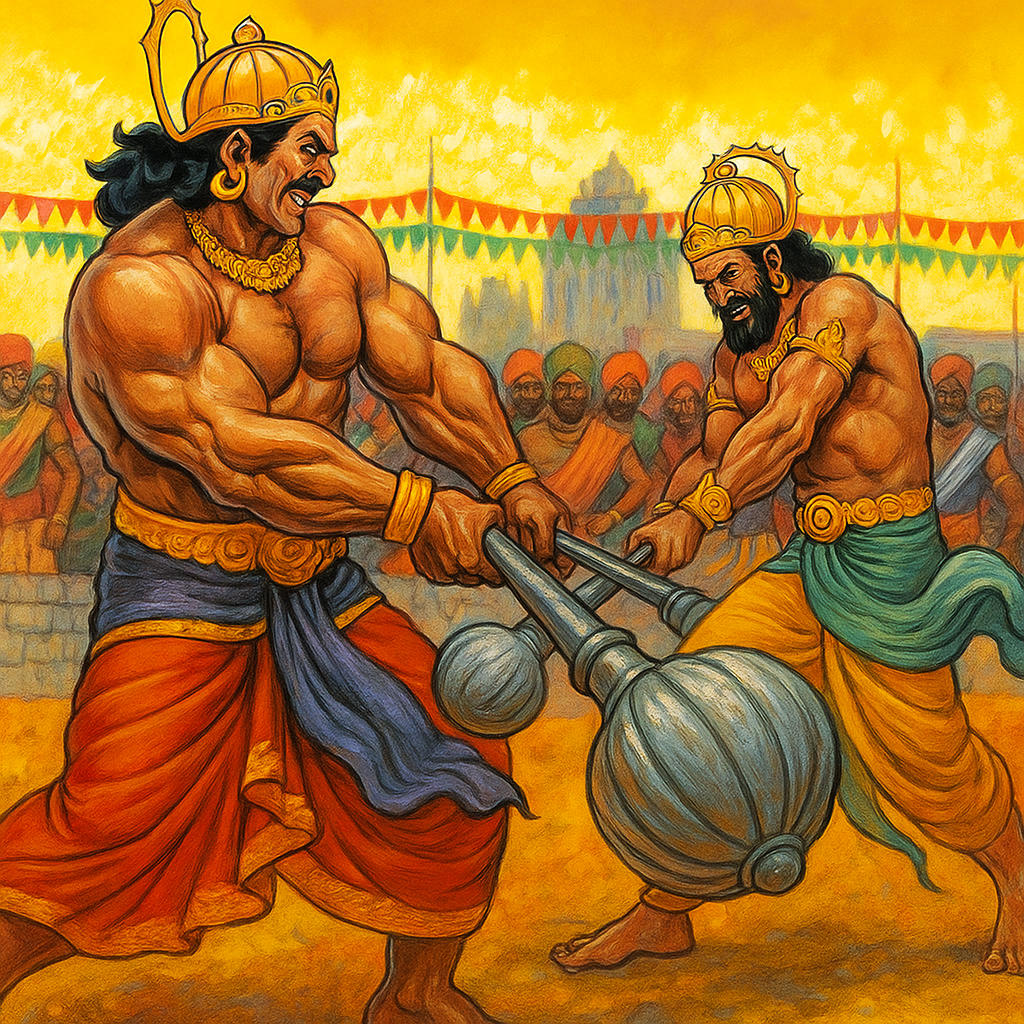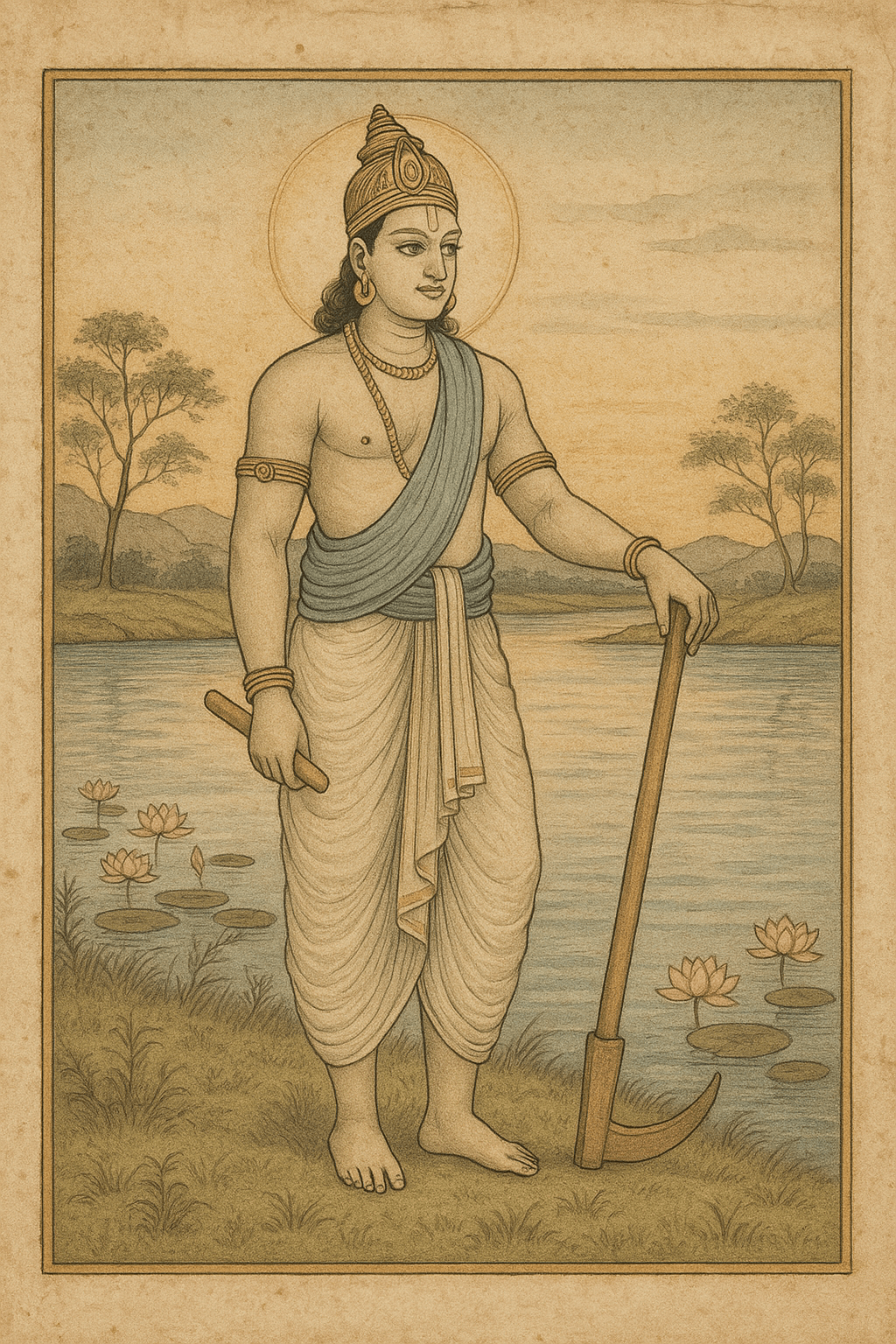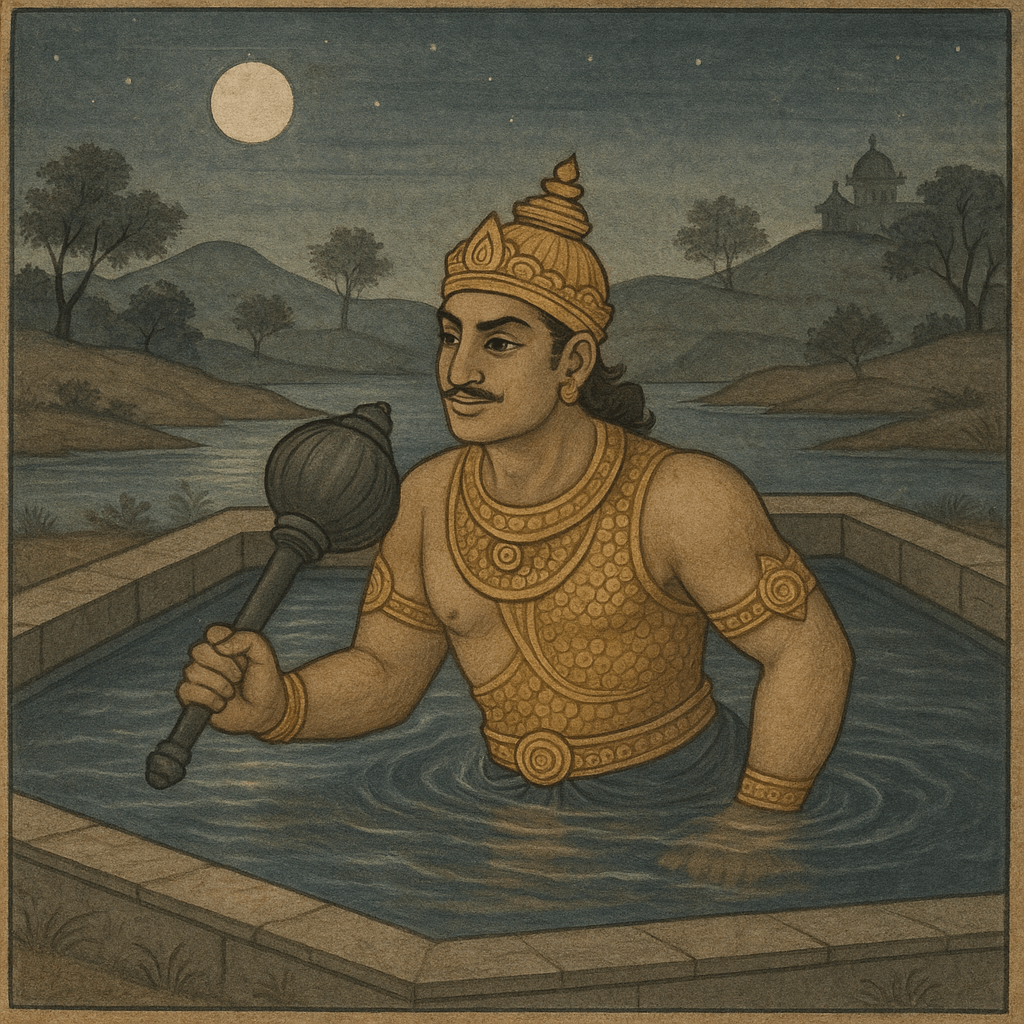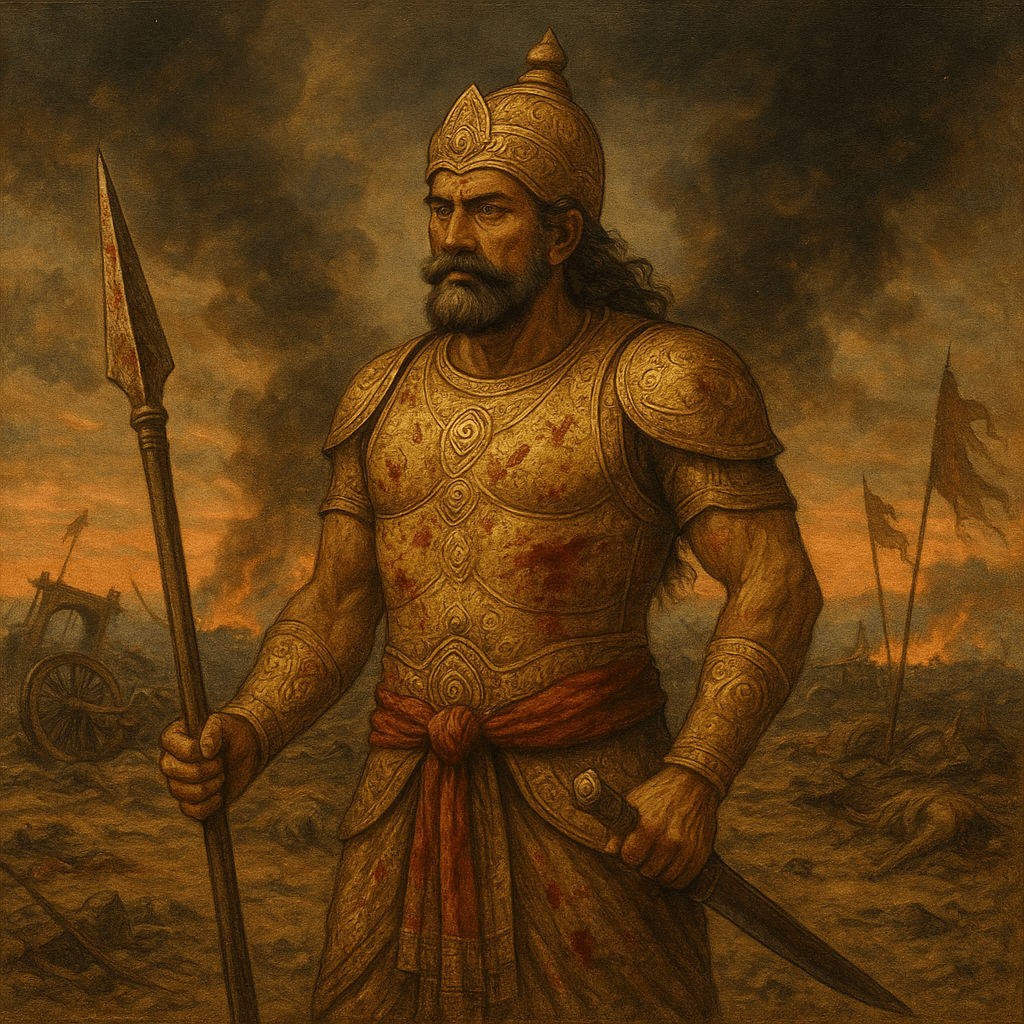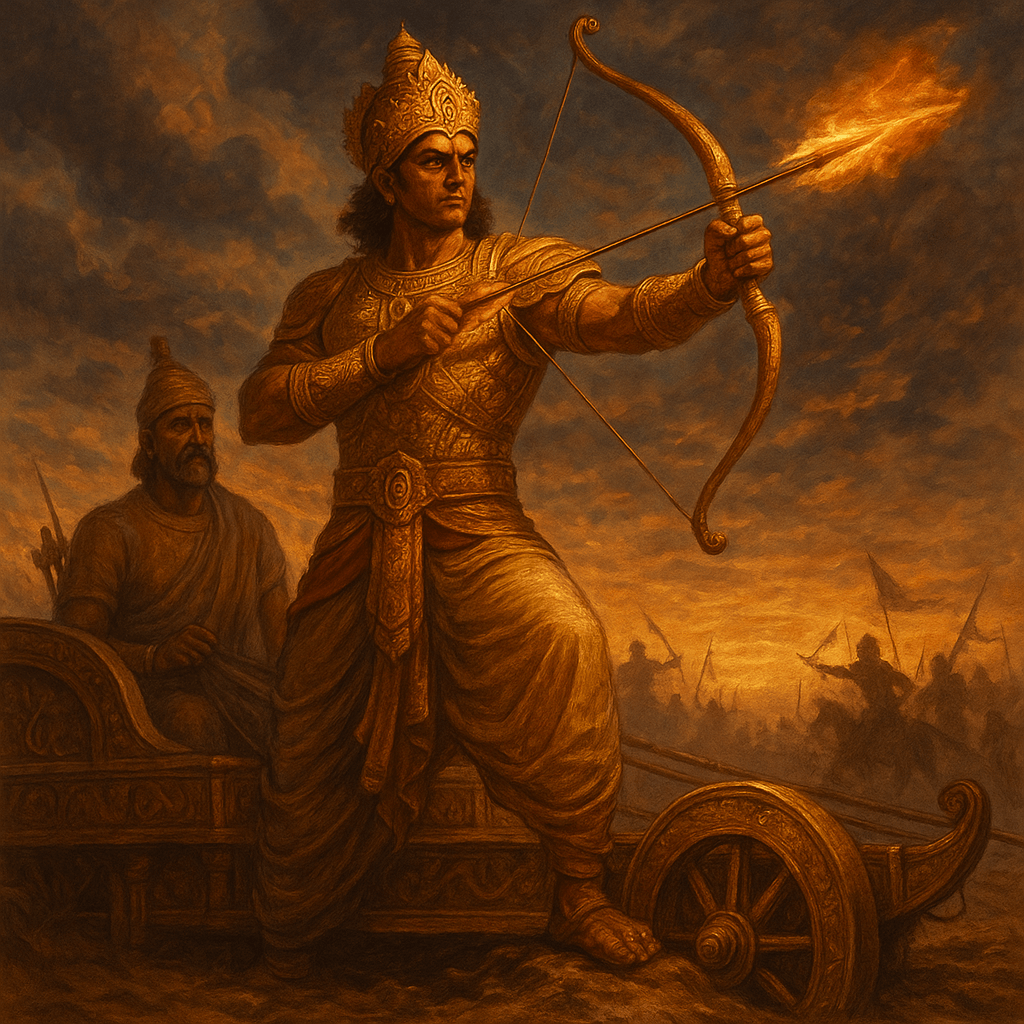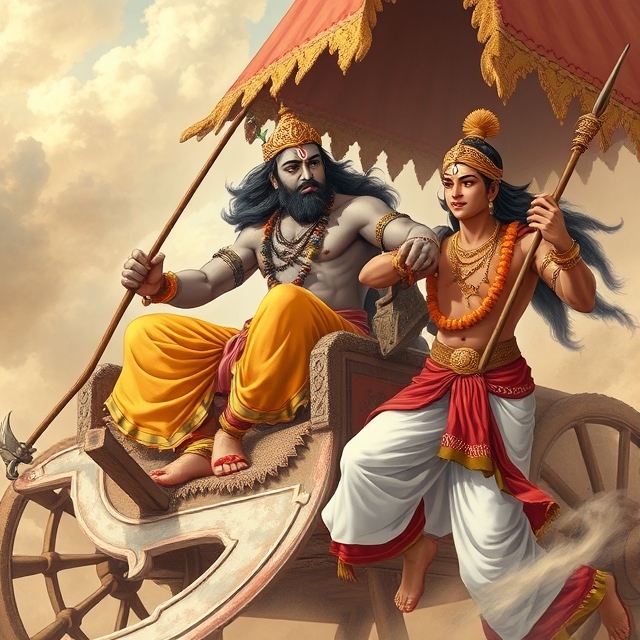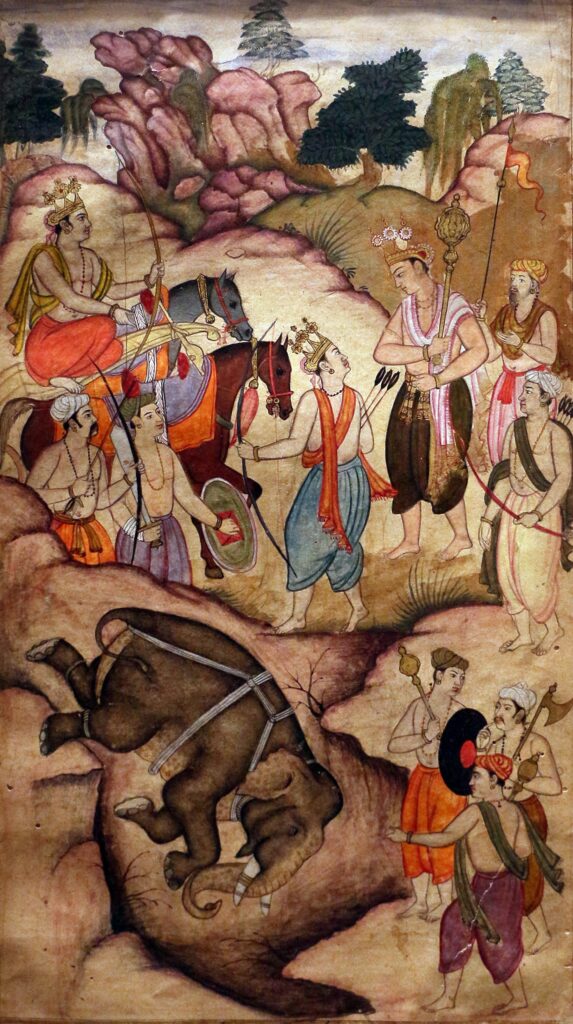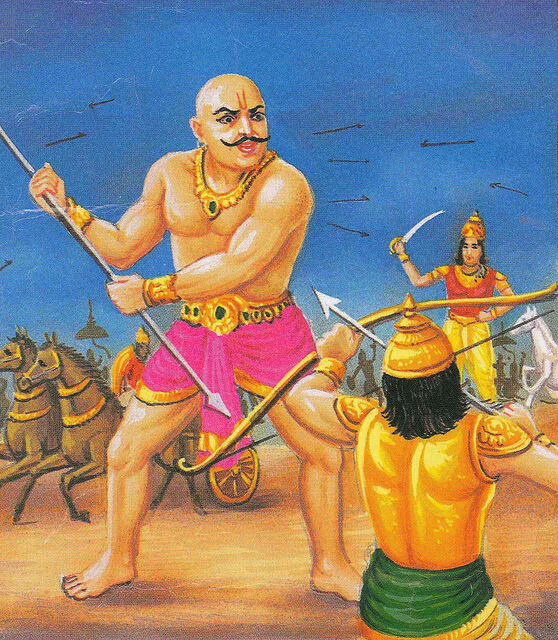Aishika Parva is the seventy-ninth upa parva included in the tenth maha parva, named Sauptika Parva. Vaishampayana continued the narration to Janamejaya in reply to his queries as follows.
What were the main contents of Aishika Parva?
The main contents of this Aishika Parva were three itemized subjects. First was to receive back the Aishika, a powerful weapon similar to the Brahmastra, including a Brahma Shira Mani, from Ashwathama. Second was to remove the curse on Ashwathama at the request of Uttara Kumari, wife of Abhimanyu. Third was to nominate a suitable person for the throne of Hastinavati palace as a later ruler after Yudhishthira. The inheritor to the throne was Prince Parikshit, the grandson of Arjuna, nominated by Yudhishthira.
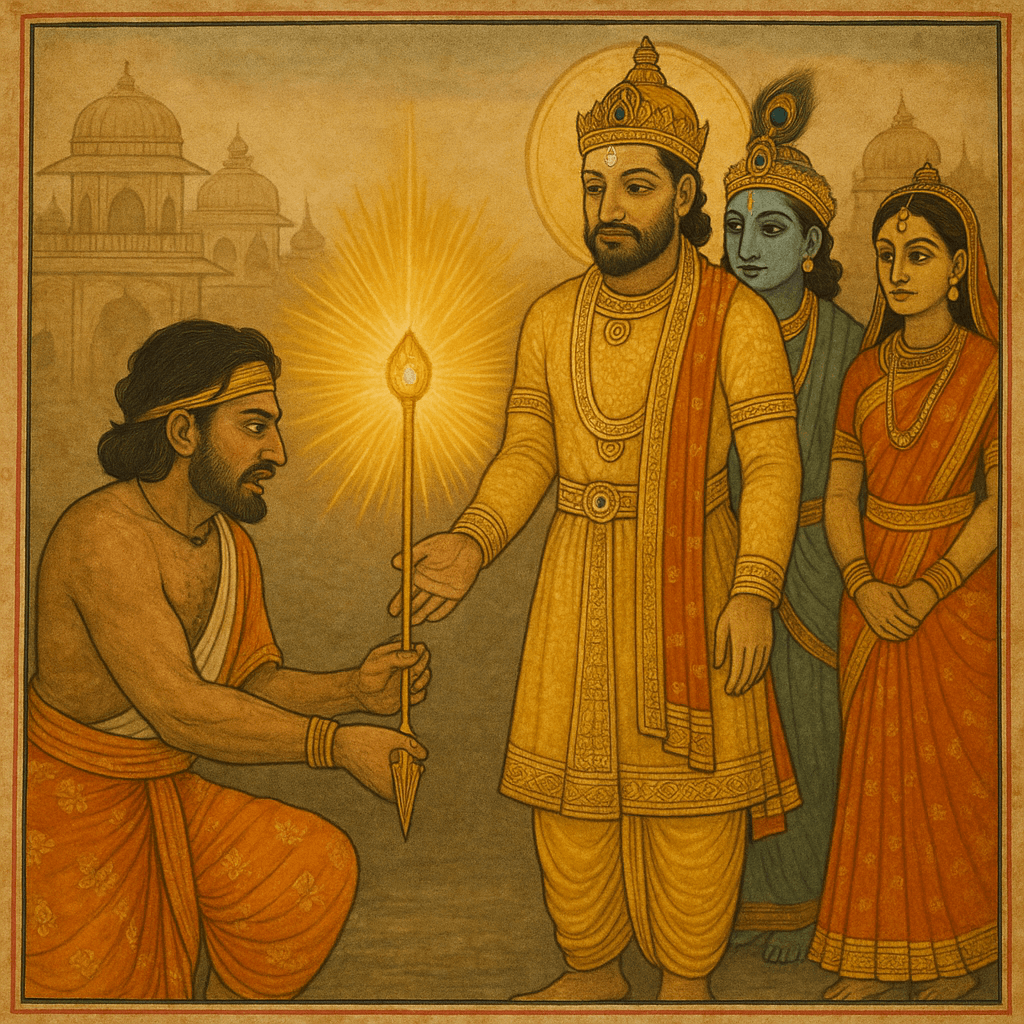
One weapon, called Aishikastra, was gifted to Ashwathama by Krishna at Dwaraka, but it was given to him due to the hard efforts of his father Drona. It was very noble and powerful, but he used it for unlawful violence, such as killing Dhrishtadyumna, Shikhandi, and sleeping soldiers with a sword while they were resting at night in the camps. These actions were not suitable for a good person. Hence Krishna attempted to deprive Ashwathama of this weapon. The Brahma Shira Mani was also a divine, greatly prestigious item with him. Later, it was taken back from him and handed over to Yudhishthira at the desire of Draupadi.
Sanjaya was imprisoned as a war prisoner, but by luck he was set free. How?
अहमेकोऽवशिष्टस्तु तस्मान्सैन्यान्महीपते ।
मुक्तः कथंचिद्धर्मात्मन् वृष्णेः कृतवर्मणः ॥
Sanjaya was describing to Dhritarashtra the incidents of the seventeenth night. He was the only person alive after Kritavarma visited the war camp of the Pandavas. One charioteer of Dhrishtadyumna escaped just as Ashwathama was reaching there, and he ran to report to Yudhishthira, riding on his horse. Kritavarma freed Sanjaya, and he fled immediately to the Kaurava side camp to save his body and life. In the early morning, Sanjaya assessed the situation, but Bhima was then calling Duryodhana for the final mace fight near Dwaipayana Sarovara.

